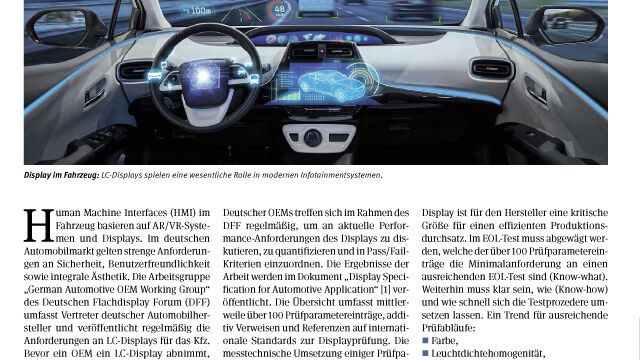How the quality of displays in the vehicle is measured

2019/10/20
German article by Dr. Silke Kirchner
Human-machine interfaces (HMI) in vehicles are based on AR/VR systems and displays. Strict requirements apply on the German automobile market in terms of safety, user-friendliness and integral aesthetics. The German Automotive OEM Working Group of the German Flat Display Forum (DFF) is made up of representatives of German car manufacturers, and regularly publishes the requirements for LC displays in vehicles. Before an LC display is accepted by an OEM, the quality must be carefully tested according to fixed criteria. Besides know-what and know-how, high-precision optical measuring technology is called for here.
In addition to the technical parameters, quality standards are being constantly revised. Representatives of OEMs meet regularly at the DFF to discuss and quantify current performance requirements for displays and classify them according to pass/fail criteria. The results of the work are published in the document “Display Specification for Automotive Application” [1]. The overview meanwhile contains over 100 test parameter entries, plus pointers and references to international standards for display testing. The metrological implementation of some test parameter entries is described in the “Display Measurement Specification (DMS) for Automotive TFT-LCDs” [2] published by the DFF. The aim of the two publications is to guarantee objective, constant and high-quality testing of LC displays for use in vehicles over the entire supply chain.